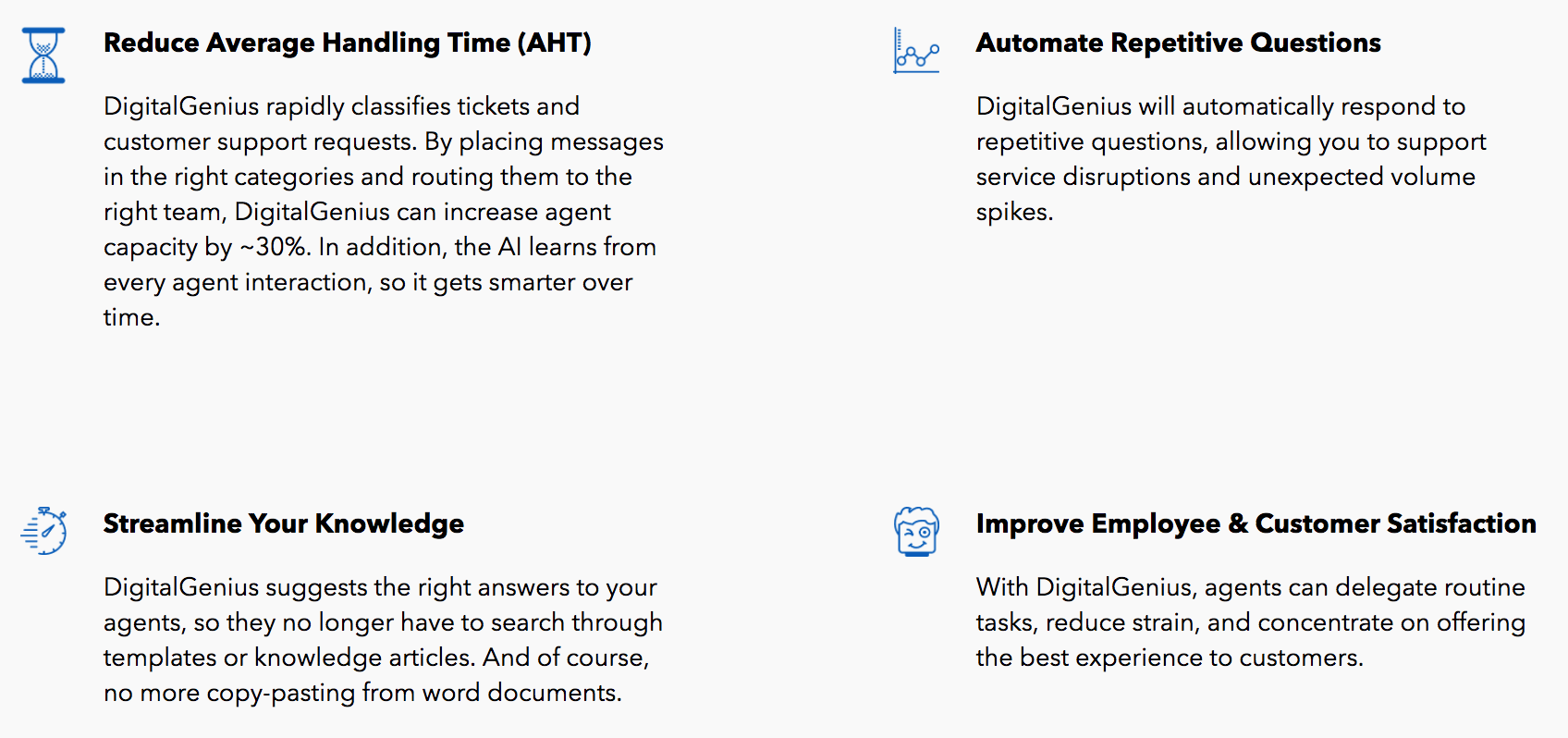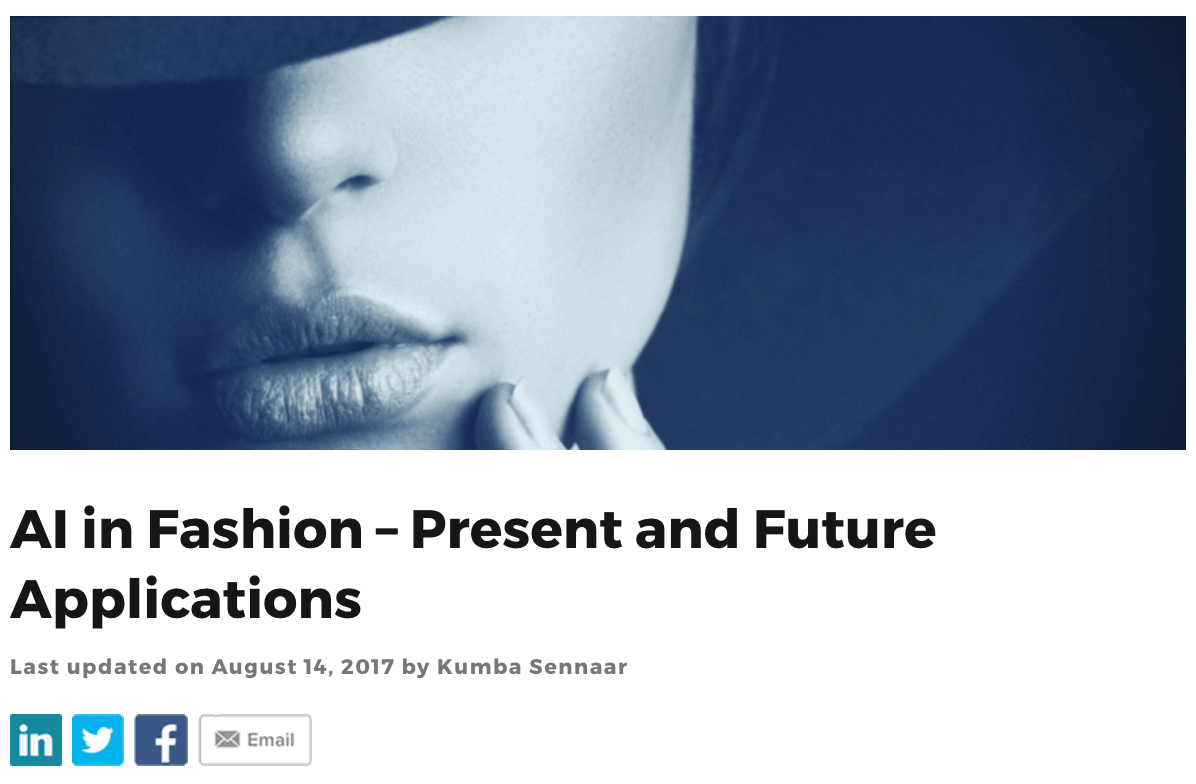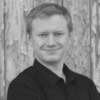
Artificial Intelligence is currently being deployed in customer service to both augment and replace human agents – with the primary goals of improving the customer experience and reducing human customer service costs. While the technology is not yet able to perform all the tasks a human customer service representative could, many consumer requests are very simple ask that sometimes be handled by current AI technologies without human input.
In this article we’ll shed light on the current trends and use-cases that business leaders should be considering today. We’ve broken this article on AI for customer service into the following four sections:
- How AI is helping to augment the work of human customer service representatives, including:
- Augmenting messenging
- AI for sorting and routing support inquiries
- AI for enhanced phone support
- Where AI may be replacing human customer service representatives
- An assessment of the results / ROI of current AI customer service initiatives
- Perspectives and predictions about the future of AI and customer service
According to the Bureau of Labor Statistics there were just over 2.7 million Americans employed as customer service representatives with a mean wage of $35,170. Any technology that could improve the efficiency of customer service representatives or make some of these positions redundant would potentially produce significant business savings. This is likely one reason why Oracle found that 80% of sales and marketing leaders say they are currently using or plan to deploy chatbots in the near future.
AI Augmenting Human Customer Service
AI doesn’t need to completely replace humans customer services representatives to be useful. There are many transitional step between a human only customer service system and possible goal of one completely run by a perfectly human like AI. There are many AI can work in tangent with human agents. Machine learning can also help streamline processes to make human more efficient by letting them spend all their time doing what they do best. This is how AI is currently being used by business to produce noticeable improvements.
Salesforce’s Chief Digital Evangelist, Vala Afshar predicts that, “The line-of-business that is most likely to embrace AI first will be the customer service – typically the most process oriented and technology savvy organization within most companies.” Other executives share his sentiment, our own consensus of 35 AI executives determined that conversational interfaces (mostly intended for customer support) would be the most important consumer-facing AI innovation in the next 5 years. AI for customer service seems somewhat inevitable.
Mr. Afshar points out that 38% of enterprises use AI, and that is expected to grow to 62% by next year. Salesforce believes deploying AI for Customer Relationship Management will increase global business revenues by $1.1 trillion by 2021, which is why they have bet so heavily on their Einstein platform with both internal development and several big acquisitions to try to capture a large share of this market. While one of the biggest players, Salesforce is by no means the only company developing AI for customer relationship applications.
1 – AI Augmented Messaging
One company that provides AI-augmented messaging is LivePerson, which last year had revenue of roughly $200 million and is currently working with IBM Watson. The company is deploying a “bot assistant to the agent” model for some clients. The goal is to avoid the frustration some people feel when dealing with a pure bot while still using the technology to increase efficiency. At the moment the company feels generalized bots don’t work, but specialized bots meant to handle the most routine and simple tasks do.

Liveperson claims that around half of all customer service interactions are currently highly suitable for bots. So they have created a system were the humans and bots work in tango. Very simple questions can be handled directly by a bot, but as soon as the conversation becomes too complicated the bot can hand the conversation off to a human. The human can handle the more difficult task and even hand the interaction back to the bot finished any simple details. This maximize the time human agents spend doing what only human agents currently can and minimize the time they spend on task that bots can handle.
This system allows one agent to handle multiple interactions. According to the case studies LivePerson promotes, their system has allowed agents at UPC, one of Ireland’s largest internet providers, to take up to three chats at once. While they say the system even let agents at Sun handle up to 6 concurrent chats.
2 – AI Organized Email Inquiries
Having a person read every email a company gets to try to figure out what the customer needs and how to deal with it can be a very time-consuming task. That is why companies are using AI to speed up the process.
Once company offering this sort of tool is DigitalGenius with their core customer service product. Some companies are using this AI-powered technology to scan and tag emails to direct them to the right office. The system also provides agents with macros and clips from the best past responses to quickly create a response.

One example of their technology which DigitalGenius highlights is its use by student prep company Magoosh. According to Magoosh, the system made their customer service team significantly more efficient. The technology let them cut the number of customer requests waiting for a reply by half and mad it easy for Magoosh to meet their internal goal of responding to all customers with 24 hours. DigitalGenius claims more than 83% of all incoming requests could be handled by their system that would tag and sort them.
3 – AI Enhanced Customer Phone Calls

AI is harder to deploy for voice-based communications. On a purely technical level it is more challenging for a computer system to deal with voice than chat. Background noise, unusual speech patterns, accents, and poor pronunciation all make it hard for an AI to translate voices into text.
In addition some people only call companies as a last resort when they have really difficult issues to address. A customer survey by Software Advice found that when it comes to simple questions customers were almost equally divided whether they preferred to use chat or a phone call to get the answer, but to get an answer for a complex financial questions customer prefer calling by a rate of three to one.
Yet even with these hurdles, there are companies who are managing to use AI to enhance the work of customer service representatives who answer phone calls.
For example, the startup Cogito has developed a real-time conversation-analysis tool based on behavioral science and deep learning. Their AI listens to conversations for both content and tone. They claim it can detect mimicking, change in volume, change in pitch, etc. to gain real-time insight into how customers are feeling and how all company calls are going. It provides real-time suggestions to customer service representatives to improve the call and evaluate performance.
One of the first big tests of their system was at insurance giant Humana. During a six month trial involving 200 agents, calls that used their system resulted in a 28 percent improvement in Net Promoter Scores, a 6 percent improvement in issue resolution, and fewer callers asking to speak to a manager. Cogito claims their system reduces call backs by 10 percent and increases customer satisfaction by 28 percent.
Similarly, Salesforce announced earlier this year that call monitoring is one of the ways they are deploying their AI technology. Einstein Supervisor claims to be able to predict customer satisfaction and make recommendations. It can track call center patterns and also look for broad patterns within the data, such as increased call volume from customers who bought a specific batch of a product.
AI Replacing Human Customer Service

The potential cost savings and the ability to provide 24-hour customer service are why some organizations are using AI to replace humans in certain customer service applications all together. AI can’t yet fully replicate everything a person can do when it comes to resolving complex issues, but there any many applications where it doesn’t need to.
Pre-internet, many customer calls were to get very basic information or make very basic orders. These are the type of interactions that are being fully automated across several platforms. For example, something simple like ordering a pizza to be delivered is a routine interaction, and the problems that would arise from AI making a small mistake are minimal.
Food companies like Subway, Dominos, Starbucks and Wingstop have all recently started using AI to let people place orders in different ways without human involvement. Individuals can place pizza orders with chatbots in Facebook Messenger or verbally tell Amazon’s Alexa to order them a frappuccino.
Several banks are making major pushes for AI, since people often interact with their banks to get basic information such as checking balances or to perform basic tasks like paying bills. Capital One recently unveiled their natural language assistant, Eno.
Similarly, Bank of America plans to roll out Erica, their AI banking assistant, in the coming months. Multiple major international companies now feel confident turning over simple, routine consumer interactions to bots.
A Look into the Future of AI and Customer Support
Predictions of just how much AI will impact customer service performance and employment varies considerably. This is partly due to the fact that many of the most interesting uses of AI in customer service have only been deployed relatively recently and the fact that customer service can be a bit nebulous.
While call center employment is an easily quantifiable measurement, some of the biggest impacts of the technology will be freeing up cashiers, hostesses, and salespeople at local stores. According to a 2016 report from McKinsey, 29 percent of what customer-service representatives do has the potential for automation.
A Tata consultancy services survey of executives around the world found that 31.7 percent of major companies are currently using AI in customer service. It is the second most common use of AI by companies after IT. It also found on average executives expect cognitive technology to reduce customer service jobs on net by 4 percent.
There is also the issue of how this technology might induce demand. Companies are currently using AI to replace humans when to comes to low-level consumer interactions to make responses quicker and cheaper, but they are also using AI to make consumer service interactions with human agents better. Sometimes, though, when you make something better and cheaper, people expect significantly more of it.
According to Microsoft’s 2016 State of Global Customer Service Report, millennials have a 68% higher expectations for customer service today than they had just one year ago. Thanks to technology 78% of young consumer expect service agent to already know their contact and product information when they contact them.
The mid-term impact of the use of AI in customer service might not be a net reduction in customer service jobs. Instead, companies may use the efficiency gained to provide a much higher level of service with similar levels of employment.
Concluding Thoughts

Customer service is one area where AI is currently being widely used and having an impact. In different forms it is being used to improve the quality or reduce the cost of customer service across industries such as fast food, banks, insurance and retail. Major companies are now confident AI chatbots and voice-activated systems can reliably handle low-level requests, resulting in significant investment and roll outs of these systems at the moment.
Compared to some other aspects of business, the impact of AI on customer service is already being directly felt by companies and regular customers in a very clear and direct way. It is a space where new and improved applications AI are being deployed by wide range of different companies at a significant rate. Unlikely other applications of AI, ways to improve customer service is something almost all companies have to deal with. Despite the rapid change, AI is not expected to fully replace human customer service agents any time in the near future.
Current applications of AI in the customer service space are being used to fully handle some of the most monotonous work and are making it easier for human agents to deal with the more difficult issues. As these systems learn, they should be able to handle more and more requests without human involvement.
This means companies will likely be able to provide the current level of service they do now for less money, but that doesn’t inherently mean it will free up all company to spend less on this part of their business. We are seeing customers come to expect better service as a result of technology making that possible. The major impact of AI in customer service could be a reduction in total spending customer service for same industries or it could be quality improvement arms race for others while spending the same amount.
Header image credit: Infinit Contact







